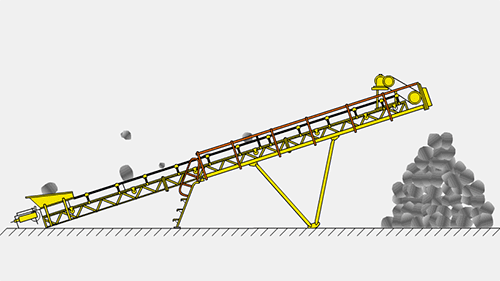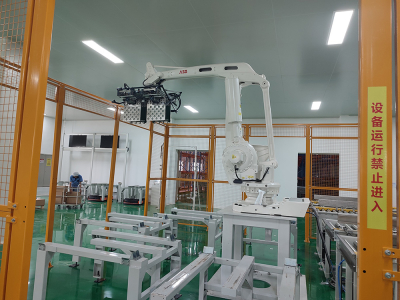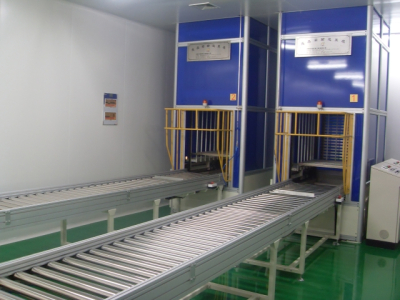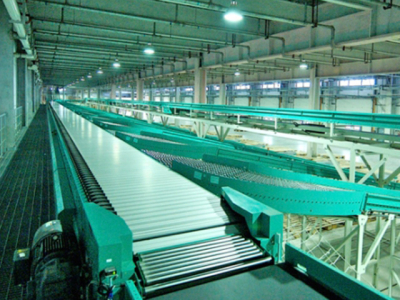What to do when a belt conveyor belt tears
Belt conveyor belt tearing accidents can be roughly divided into longitudinal tearing and transverse tearing of two categories, of which longitudinal tearing occupies more than 90% of the total number of belt tearing faults, so here to longitudinal tearing as the object of the tearing reasons for its analysis.
Belt tear causes analysis.
Belt deflection tear
When the belt conveyor is in normal operation, the belt should be located in the center axis part of the frame, and when the belt running phenomenon occurs, it will cause the belt in the running side of the stack folding, in the unbalanced force for a long time, the belt will be easy to tear failure.
Generally speaking, this situation will only occur on the side of the belt deflection will not occur on the inside of the belt, the threat to production safety is small, while this belt tear phenomenon has a more obvious omen, since the belt deflection occurs to the emergence of the tear there is a long reaction time, so more through the overhaul and maintenance to be prevented.
1.Belt core tear
Belt machine operation, such as suffered a strong impact of large metal materials or gangue, it may lead to belt steel core fracture, fracture at the steel core continues to be used, in a long time under the influence of stretching, bearing may penetrate the belt and exposed in the belt cover rubber outside. When the length of the exposed steel core is long, it may be involved in the belt operation of the rollers, steering rollers and other components, and with the belt operation and is constantly drawn out, so that the belt breaks.
There is also a situation where the head sweeper scraper clip hangs the metal or other debris on the belt surface, grinding the belt through. Prevent this kind of tear can only strengthen the inspection efforts, found the exposed wire rope head, cut off immediately to avoid future problems.
2.Scratching tear
In the belt longitudinal tearing, scratching tearing is a common situation, usually can be divided into sharp pressure scratching and penetration scratching two categories. One of the former is by the large size of the long pole sharps stuck in the bottom of the chute, by the belt driving force and scratching the belt; the latter refers to the sharps from a certain height down, under the influence of gravity, the tip of its penetration of the belt and stuck in the chute or the rollers, with the belt to continue to move forward and tearing the belt.
3.Material jamming blockage tearing
This situation occurs in the lower part of the chute, because the distance between the chute front and the belt surface is limited, and the belt below the buffer rollers were distributed at intervals, the natural bearing strength is not uniform, when the transportation of materials unilateral projection length exceeds this distance, in special circumstances, easy to make large pieces of material stuck in the chute front and between the belt, strong extrusion belt caused by tearing.
There is another situation is when the loading point at the feed suddenly increased, so that the belt loading blockage, in the absence of blockage caused by system shutdown, after a long time of friction, thus causing the belt to tear.

Measures to prevent belt tears
Take the initiative to prevent tearing from the source
Strengthen the control of material quality and increase the de-chunking equipment for de-chunking. Set up the de-chunking device before the primary belt to reduce the chunky materials into the whole conveying system.
1.Increase the passing capacity of the chute
Under the premise that the width of the chute is determined by the width of the belt, expand the exit of the chute upward, try to increase its passing capacity to avoid jamming debris or large materials.
2.Strengthen the management of equipment
Improve the belt patrol and inspection efforts, especially the management of other ancillary equipment of the belt conveyor, such as reproduction funnel, sweeper and other facilities to prevent the liner and other sharp objects off.
3.Improve the conveyor structure
Reduce the impact, reduce the speed of the material, and reduce the possibility of impurities inserted into the belt by reducing the drop of the drop point, increasing the buffer grille, and the fine material falling before the large material.
4.Improve the structure of the belt itself
For example: improve the airtightness of the belt, prevent the core layer of water, wire rope corrosion, require manufacturers to strengthen quality control, improve quality.
5.Add tear detection device
When the belt is torn, it will be detected as soon as possible in a short period of time, issue an alarm and stop the machine, minimize the length of the tear and reduce the loss.
6.Adopt tear-resistant belt
Tear-resistant belt is made of wire rope as longitudinal skeleton material, and transverse reinforcement is added into the belt body as anti-tear layer, but the cost of this tear-resistant belt is about 20% higher than that of ordinary belt.
7.Adoption of tear-detectable belt
In the belt with a closed coil sensor, the detector is installed in the belt conveyor easy to tear parts, the detector is connected to the controller. If the belt is torn, the sensor closed coil is cut off, when it passes through the detector, the detector stops sending out pulse signals, the controller does not receive pulse signals, alarm and shutdown immediately. At present, this kind of belt can not be produced domestically, the cost is high.




